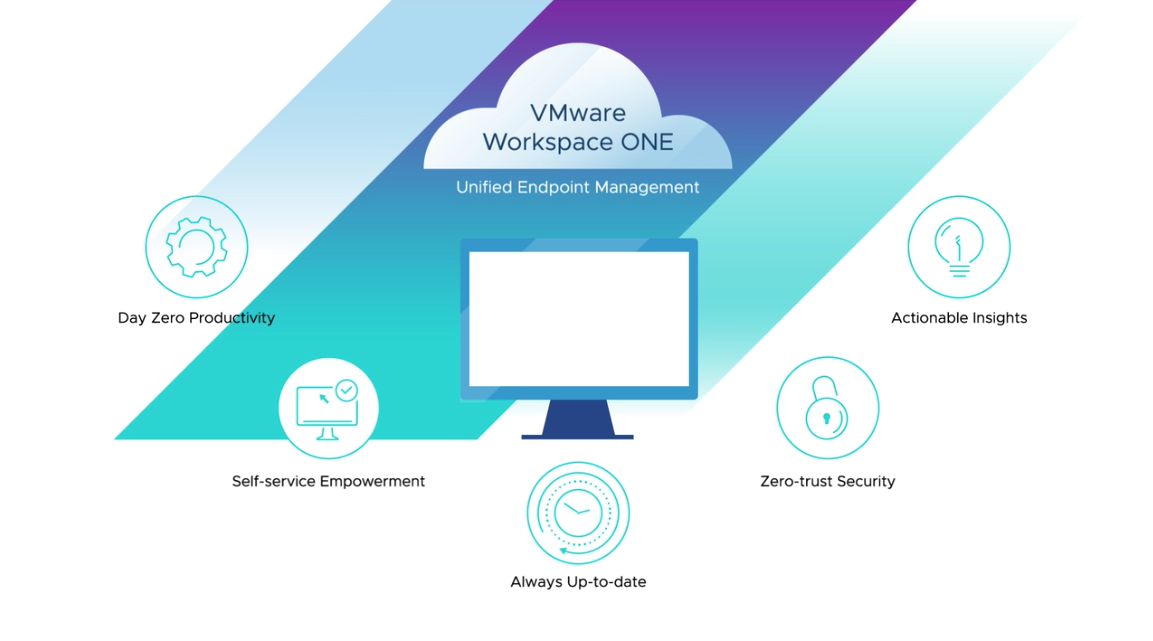Last year, I wrote a blog titled “Five EUC Resolutions to Make in 2020.” Below is the introduction to that entry:
As we enter the new year (and new decade), it’s only natural to turn our attention to what the future will bring. The new decade will undoubtedly bring immense change to the end-user space. After all, in 2010 most businesses were just buying their first corporate smartphones. While resolutions normally focus on personal development, it’s important to be out in front of the next big waves in the end-user computing space.
What an understatement! 2020 brought immense challenges to the technology sector. With millions of users working from home indefinitely, sometimes for the first time ever, IT organizations were challenged with determining the best way to ensure that productivity, employee health and safety, as well as collaboration would not be adversely affected.

This year, the opposite might occur. As most experts believe that 2021 will bring a return to the office for many employees, many questions arise. How do firms ensure the health and safety of their employees, support a truly hybrid workforce, and promote employee choice?
The five EUC resolutions below help you get started in making these murky decisions a bit clearer.
1. Utilize the Full Feature Set of Workspace ONE Intelligent Hub
Many customers made the standard update from the legacy AirWatch agent to the Workspace ONE Intelligent Hub and called it a day. The Intelligent Hub offers a suite of new services and features that make it much more than just an enrollment entry point. This application allows for a full enterprise application catalog, a people directory, a notification engine for employees, and more. Enabling Hub Services will help you stay connected to your employees and drive a much better employee experience for your users.
As an administrator, you’ll need to enable Hub Services in the UEM console in the Hub Configuration pages. You’ll also need to ensure that you have Workspace ONE Access installed (or your cloud tenant enabled) to make use of the full suite of services.
2. Develop a Desktop Hybrid Cloud Strategy
If you didn’t catch all of the great announcements at VMworld 2020, you may have missed some incredible news about the future of desktop hybrid cloud. Deploying a desktop hybrid cloud allows you to respond quickly to changing workload demands and user requirements. With VMware Horizon planning for support on Microsoft Azure VMware Service, Google Cloud VMware Engine, Alibaba, VMware Cloud on Amazon Web Services, and more, you have never-before-seen flexibility in how your data and workloads are hosted.
A great first step is ensuring that you’ve installed and configured the Horizon Cloud Control Plane. Even if you’re only using Horizon on-premises today, the Cloud Control Plane will help give you a foothold for a future hybrid strategy.
3. Enhance Automation with Workspace ONE UEM Freestyle Orchestrator
Also announced at VMworld 2020 was the release of Freestyle Orchestrator for Workspace ONE UEM. Freestyle Orchestrator is an orchestration platform that allows you to create automated workflows easily. Just drag and drop different resources, conditions, and actions into the workflow and your automation is complete. The tool also allows you the ability to preview how your workflow will affect the current device fleet. A good example of a simple automation would be to detect if any Windows 10 devices are currently using an outdated version of Google Chrome. If so, the workflow can be configured to automatically push a new version of the software, and/or install additional restrictions until the update has been performed on the user side.
Note that Freestyle Orchestrator currently supports macOS and Windows platforms and is only available in select BETA environments today as a Tech Preview feature. Please reach out to your VMware sales representative if you are interested in demoing Freestyle Orchestrator to see how it can simplify and automate your IT processes today.
4. Explore Workspace ONE Sensors
If you have begun the path to true modern management of desktop operating systems with Workspace ONE UEM, you need to be taking advantage of sensors. Sensors are a feature that allow administrators to poll additional attributes for reporting and other uses within the Workspace ONE UEM console. Examples include applications, OS versions, patches, etc. Workspace ONE UEM tracks quite a few variables out of the box, but the sensors feature enables an extensibility platform that will enable administrators additional information to streamline reporting, automation and more.

5. Get Serious About Enterprise Architecture
Last year I accomplished a personal goal to become TOGAF certified. TOGAF is a framework for Enterprise Architecture. After going through the certification process, I quickly realized how important and foundational these principles are to running a successful technology-driven organization. Enterprise Architecture provides a framework for data-based decision-making based on firm requirements.
While any detailed description of the TOGAF Architecture Development Method (ADM) would be short-changed in this inherently limited medium, I highly recommend beginning exploration of a full-fledged Enterprise Architecture practice within your organization.
Additional Notes
In case you need some additional inspiration, below were my “Top 5 EUC Resolutions for 2020.” Each one of them is still valid and could help prepare your organization for the year ahead.
- Make Use of Intelligent Analytics
- Start Managing Mobile and Desktop Holistically
- Find Use-Cases for Virtual Desktop
- Employ Intelligent Single Sign-On Across Mobile, Desktop, and Browser
- Get Your Team in Order
Next Steps
Still need help deciding how to drive value in your organization using VMware End User Computing technologies? VMware Professional Services offers services to help you get started. Please contact your VMware sales representative for more information on service offerings related to each of your 2021 resolutions.






